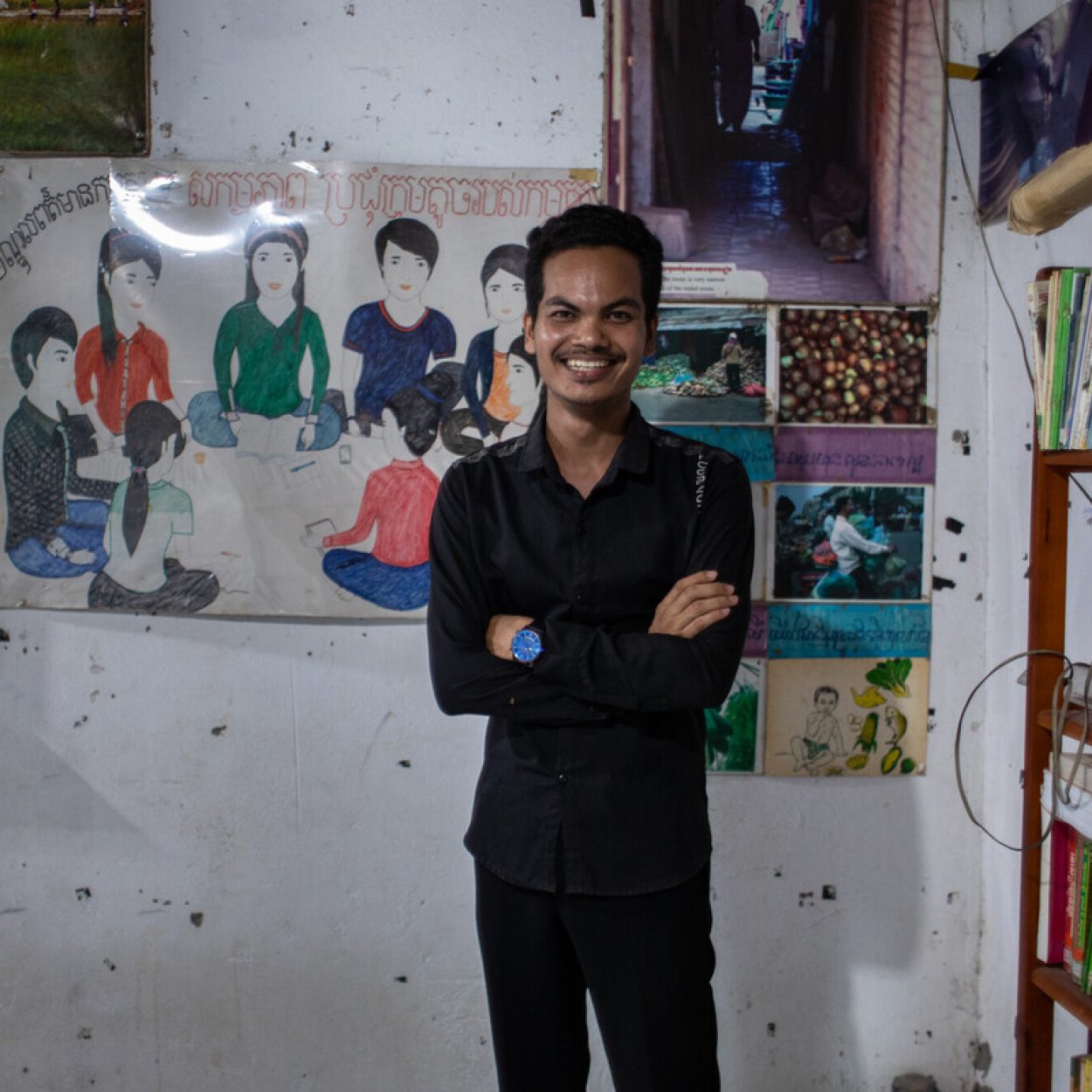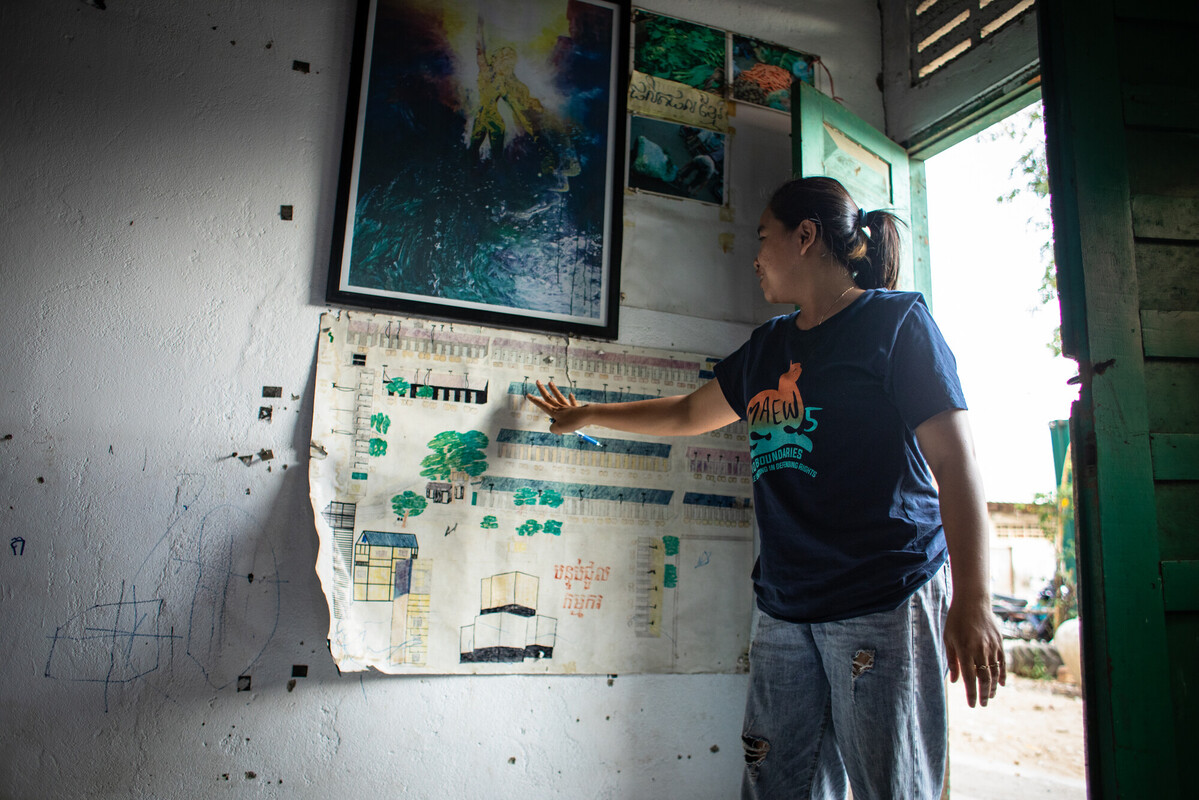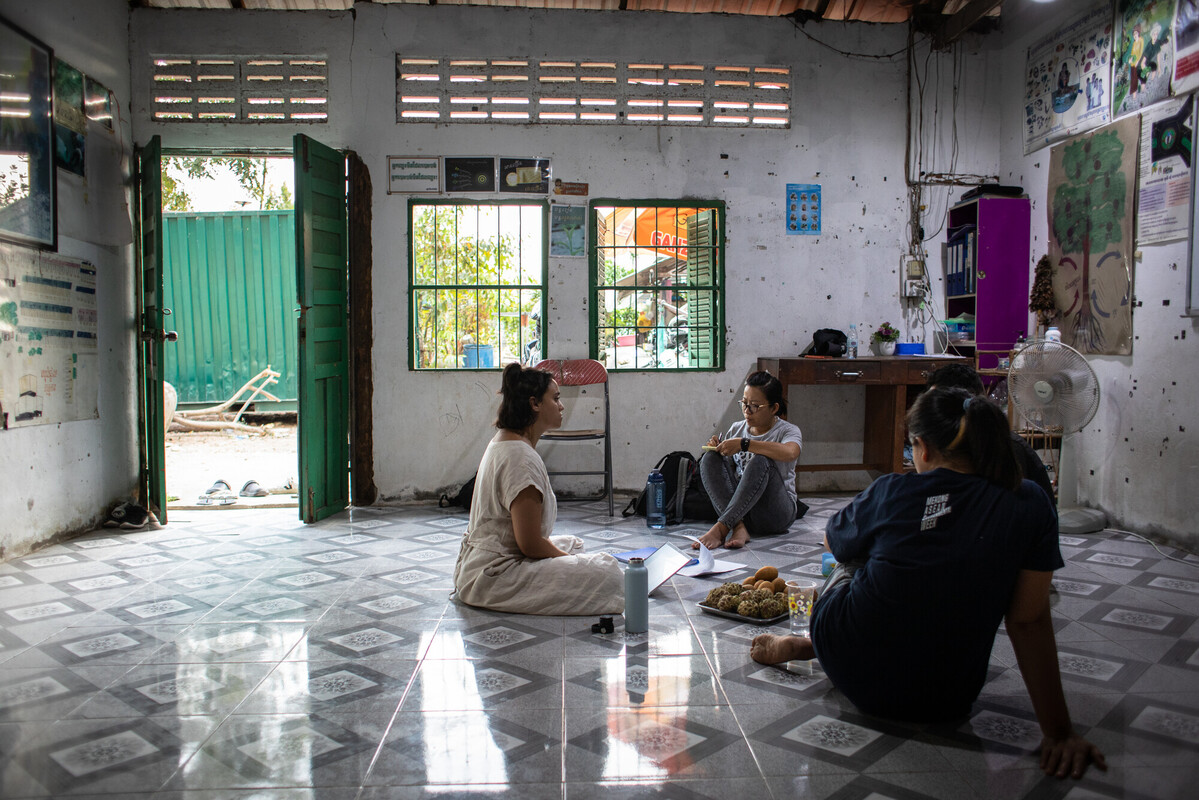
Cambodia’s Worker’s Information Centre equips garment workers to fight for better conditions
The garment industry is big business in Cambodia, accounting for 57% of Cambodia’s total exports. Valued at over $34 billion in 2022, it is an industry that continues to grow and thrive. But very little of this reaches its workers, with many facing poor working conditions, harassment and low wages. Here’s how Workers’ Information Centre, a member of IWDA-partner United Sisterhood Alliance, is working to change that.
On a typical day, Chorn Phorn wakes up at six in the morning in his rented room on the outskirts of bustling Phnom Penh. It’s an early start to make sure he can make it in time for his 7:00am shift at the factory. With an hour break in between, his day would usually end at 4:00pm if it weren’t for the overtime most factories increasingly require. Instead, he will finish at 6:00pm and be most likely expected to work over the weekend too.
For this, he will be paid less than $3 per hour.
This is the reality for many of the 700,000 people working in Cambodia’s garment industry. Others find themselves in more difficult situations, working in sweatshops with no formal employment contracts.

Since 2009, Workers’ Information Centre (WIC) has been working hard to change this by building and strengthening a movement of garment workers in Cambodia with the skills and capacity to advocate for their rights. Since 2012, Phorn has been part of this movement
On this day, we meet him at one of the drop-in centres WIC operates – a space where a lot of this organising happens.
“I used to be a farmer from Kampong Speu Province. I came to Phnom Penh to work since I was 14 years old. And I’ve worked in the factory for almost 11 years,” Phorn shares with us.
At 26 years old, he is the newly elected garment workers’ representative at his factory – a title he bears proudly as a testament of his co-workers’ trust in him and his ability to advocate for better working conditions for them.
Phorn is no stranger to advocacy. He has been a key organiser with the Worker’s Information Centre for almost seven years now. Before that, he first became interested in joining WIC as a volunteer because of their successful campaign to increase the minimum wage from USD $80 to $160 a month.
Pointing at a drawing on the wall representing the work behind this campaign, Phorn shares with us, “that picture is really a good memory for me because this was the first time that I became totally interested in participating in WIC’s work. And then I become an active worker in 2015 and a key organiser from 2017.”
Phorn first learned about this drop-in centre through other key organisers, women that had come to visit him at his rented room when he first moved to Phnom Penh to let him know of the services and opportunities that WIC’s centre could offer him. That decision to visit the centre changed his life in many ways.
“When I started joining the drop-in centre, the sisters here encouraged me to further study to complete my grade 12. So, from then, even though I stopped for about nine years, in 2019 I continued to study until I finished grade 12,” Phorn shares with us.
This kind of support is core to what WIC’s drop-in centre offers garment workers in the area. From information sessions on workers’ rights to critical services like healthcare, legal assistance and training opportunities, these centres are equipping workers with the skills and information they need to realise their rights and fight for better living and working conditions for all factory workers. During the COVID-19 pandemic, WIC’s centres were also an essential lifeline, providing workers with food and assistance when the factories abruptly shut down.
For many, the centre is also simply a place to gather, to borrow one of the many books available on topics ranging from the law to health and culture, or to learn English from one of the volunteers who run classes here three days a week. It is a safe place to find community and connect with the other many workers like Phorn who have had to move away from their families to secure a livelihood under difficult circumstances.

Women garment workers taking the lead
In a country where 80% of garment workers are women under 30, WIC has the distinction of being the only organisation within Cambodia’s broader network of trade unions to focus primarily on women. A core part of their work is about creating spaces for women to become leaders within the garment and union sectors, ensuring their voices are heard and responded to at national, regional and international levels.
“We work specifically for women’s empowerment because our aim is to see that all issue related to women will be solved and heard by the government or any other stakeholder. If there is no organisation like WIC or these drop-in centres or other NGOs who work on gender, maybe women fall into even more vulnerable situations,” Phorn tells us.
Phorn has been working alongside other key organisers to surface the issues women face as workers and the changes they would like to see in their factories.
As traditionally male-led unions have gained ground in the country, empowering women to lead these movements has become more important than ever. A troubling trend Phorn has noticed over the past ten years is of factory managers replacing men with women workers as labour movements capture momentum in their factories, based on the assumption that women will not speak up and advocate for their rights. In these circumstances, ensuring that women have the support and training they need to continue this work and give voice to the particular issues that affect them is essential.
“If we stop mobilising or organising people to speak up or to voice or to advocate, it seems like we will lose a lot of things,” Phorn says.
According to CARE Australia, nearly 1 in 3 women in Cambodia’s garment industry experience sexual harassment in their workplaces. As more women are forced to make long commutes in increasingly precarious situations, they are now facing heightened safety concerns in every aspect of their work day. As Phorn shares with us, this extends to poor working conditions on the factory floor and their safety within the rented rooms they have to live in to be close to the factories.
Providing a space where these concerns can be raised is all part of building a collective voice for garment workers – a key aspect of WIC’s advocacy to secure workers’ rights in the country.

The Workers’ Information Centre’s Workers’ Forum
In May, WIC held their annual Workers’ Forum. Attended by relevant stakeholders across the industry, including representatives from the Cambodian government, the Forum brings together workers from all five of WIC’s drop-in centres to discuss a topic chosen by them through weeks of extensive consultation. The Forum gives workers an opportunity to ask questions of government representatives and show the evidence base they have developed around issues faced by garment workers today.
“When we ask them questions or share any experience or any information, we normally attach those with an evidence base or documentation from what we collect. This is the thing that we found as the most useful or the most effective way that we can try to advocate or put pressure on the government,” Phorn explains.
This knowledge around how to best advocate for their needs comes from years of training and organising, including through exchanges and learning visits with other labour movements and organisations in Cambodia and regionally.
“We were given opportunities from WIC to join other regional workshops or leadership session and learn how to organise and do the campaign. So this is something that we can see that now, the key organisers, they tend to be more confident in their [ability] to negotiate or facilitate with local authority,” Phorn adds.
This cross-collaboration and sharing is invaluable to women garment workers who, by getting to share and learn from others within the movement, can see the commonalities in their experiences and feel more emboldened to advocate for themselves to create change. As Phorn adds, spaces like the drop-in centres and other collaborative activities such as the Workers’ Forum are one of the key platforms to ensuring women’s voices at the grassroots and community level can be elevated and heard at the national and regional levels.
As our interview ends, Phorn tells me he’s getting ready to visit the rented rooms across the yard from the drop-in centre. He’s going to spend the next few hours talking to other workers, checking-in on how they are doing and telling them about the support WIC can offer them – the movement ever-growing.